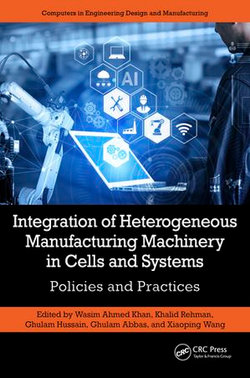With the advent of the 4th Industrial Revolution, the implementation of the nine pillars of technology has taken a firm root, especially after the post-COVID pandemic era. The integration of cyber-physical systems is one of the most important pillars that has led to the maximization of productivity, which also leads to the maximization of profits from a manufacturing system. This book discusses manufacturing enterprises, then looks at the theoretical and practical aspects of integrating these manufacturing systems using legacy and modern communication methodologies and relates them to the current level of technology readiness.
Integration of Heterogenous Manufacturing Machinery in Cells and Systems: Policies and Practices focuses on the methods covering the use of Artificial Intelligence, Augmented Reality, the Internet of Things, and cellular and physical industrial communication. It describes the nine pillars of technology which include the Internet of Things, Cloud Computing, Autonomous, and Robotics Systems, Big Data Analytics, Augmented Reality, Cyber Security, Simulation, System integration, and Additive Manufacturing. The book highlights the methods used that cover mechanical, electrical, electronics, and computer software aspects of developing manufacturing machinery and discusses computer-aided design (CAD), production planning, and manufacturing, as well as production databases with basics and semantics.
This book is an ideal reference for undergraduate, graduate, and postgraduate students of industrial, manufacturing, mechanical, and mechatronics engineering, along with professionals and general readers.



Share This eBook: